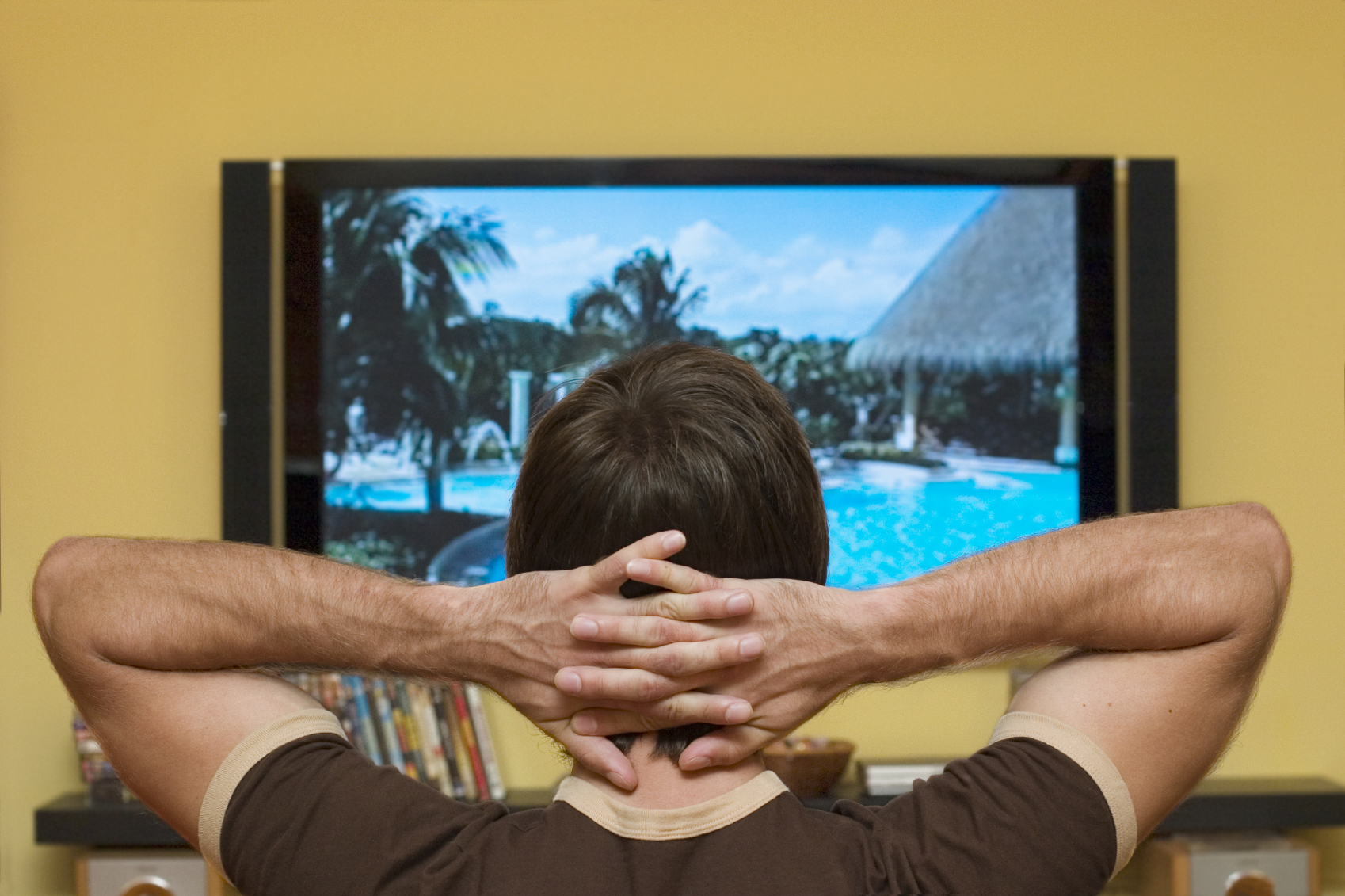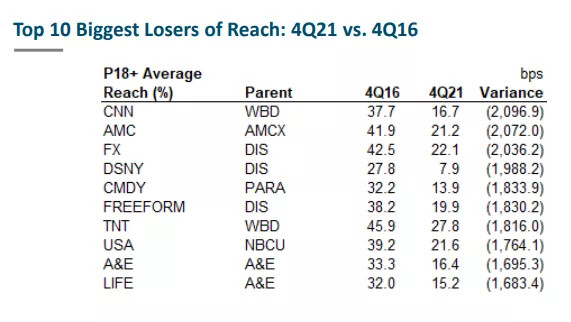Bleak Future For Linear TV Has Arrived, Analyst Finds
Time spent on cable networks built on movies, syndicated TV and kids content has collapsed, Michael Nathanson says

The future in which linear TV is driven almost exclusively by live sports, news and events has arrived, according to analyst Michael Nathanson after crunching numbers from Nielsen.
“Time spent on cable networks built on movies, syndicated TV and kids content has collapsed over the past two years as consumers and media companies adopted a streaming first mind-set, said Nathanson, senior analyst MoffettNathanson in a report Thursday. “As a result, it is clear as day, looking at a two-year stack, that live sports and news are rising in importance and value to linear stake-holders.
Nathanson found that the reach that cable and broadcast has evaporated, falling by double digits over the past few years, leaving mainly older viewers.

“There has been a dramatic reduction in the consumption of original scripted cable network content as audiences move to SVOD for that fare,” he said. “In the end, linear viewing appears headed to a world of 'live' programming while almost every other genre is served on demand.”
By the fourth quarter of 2021, 69% of broadcast network viewership was by people age 50 and up. On cable, 69% of consumption came from older viewers. Only 5% of broadcast network viewing was by people 17 or younger. On cable, it was 6%.
“Older viewers may be cutting the cord,” Nathanson noted, “but younger folks are increasingly asking the question, ‘What is a cord?’”
In 2021, C3 ratings for the big broadcast networks were flat, with NBC getting a boost from the summer Olympics.
Get the TV Tech Newsletter
The professional video industry's #1 source for news, trends and product and tech information. Sign up below.
On cable, Nathanson noted the news networks total day viewing–measured by C30– is down by between 27% and 33% after 2020’s intense news cycle. Kids networks Cartoon Network was down 34% and Nickelodeon dropped 23%.
Overall cable network viewing was down 18% in 2022, with ESPN being the only top network to show an increase.
Reach has fallen even more over a five-year span starting in 2016.
“CNN’s reach fell from 38% to just 17%,” Nathanson said. “While much of this can be chalked up to the cyclical nature of news and election cycles, the same cannot be said of AMC, FX, and Comedy Central, which face a real existential threat from streaming. Without either sports or news, these networks simply do not provide any of the content we believe will keep viewers tuning into linear.”
Networks have also seen big drops in length of tune–an important statistic to advertisers–since 2016.
“Among the networks in company portfolios under our coverage, Investigation Discovery, MTV2 and TNT saw the biggest declines in length of tune, declining 18.3, 11.1, and 10.8 minutes, respectively, Nathanson said. “Oxygen saw the biggest gain in length of tune from 2016 to 2021, increasing 13.8 minutes. Other big winners include other general entertainment channels such as Pop TV and Ovation.”
Even the top shows on cable were showing declines in viewership. Nathanson looked at the top 3 shows on each of the top 30 networks.
“Of the 60 shows on this list of the top three shows per cable network, only 14 increased in time viewed from2020 to 2021,” Nathanson noted. “NBA on TNT" experienced the largest increase in absolute time viewed in 2021. ESPN’s NCAA football coverage did third best. Paramount’s Yellowstone stands out as one of the few scripted shows to grow, near the top of the list, coming in fourth.”
As ratings have declined, linear ad revenues have remained relatively flat, Nathanson noted.
"Networks and affiliates have managed to stave off a complete collapse of their revenues by matching declining viewership with inflating ad prices, but given the dramatic drop in certain cable networks’ reach, this long-running trend clearly looks less sustainable from here,” he said.
